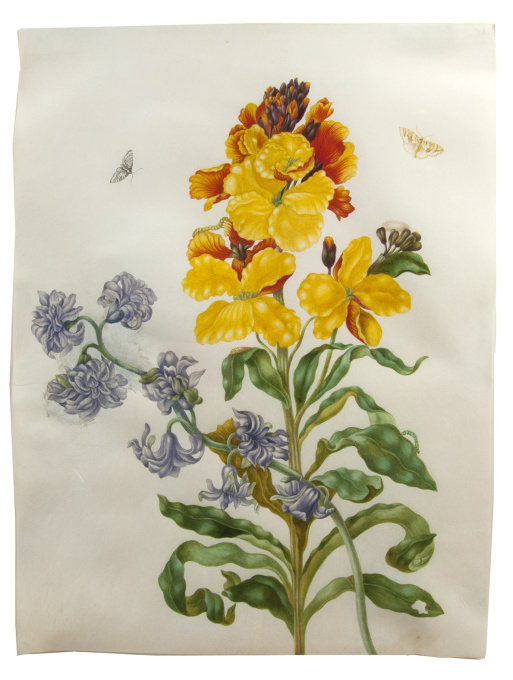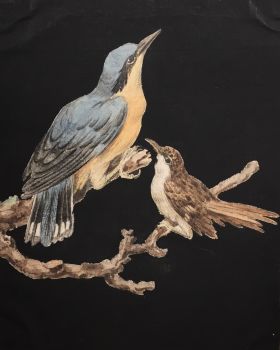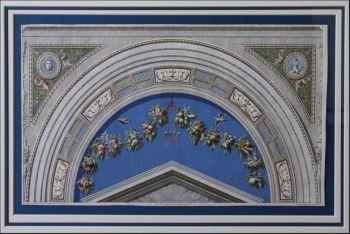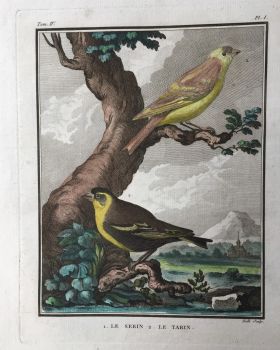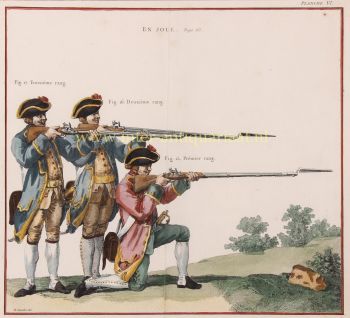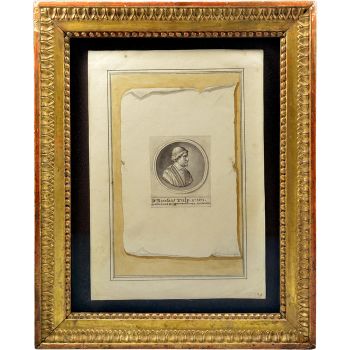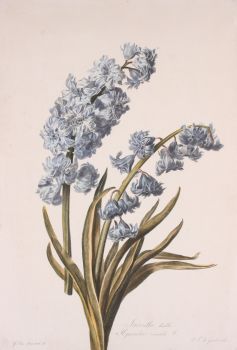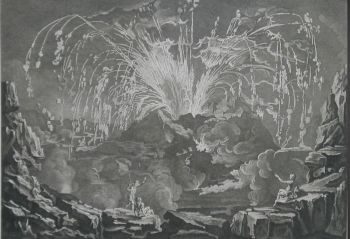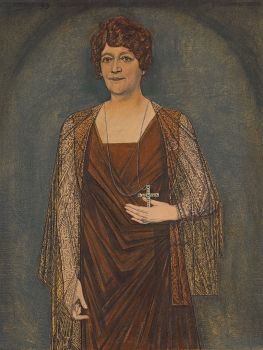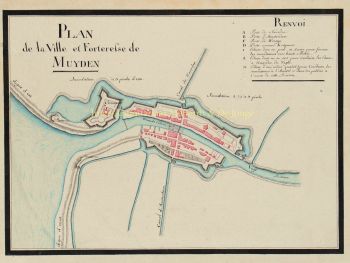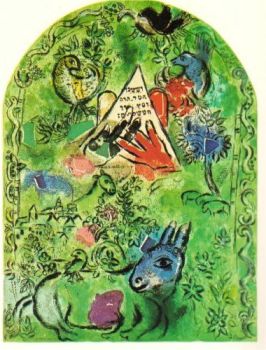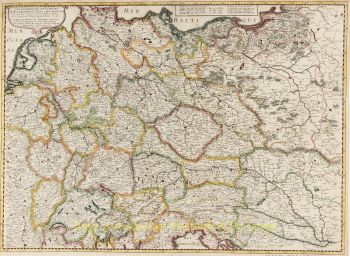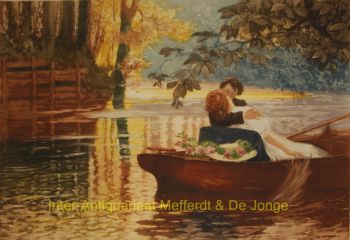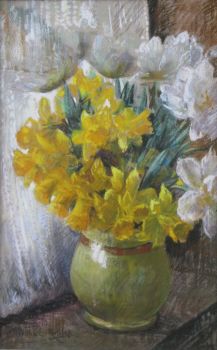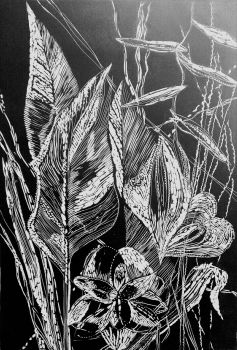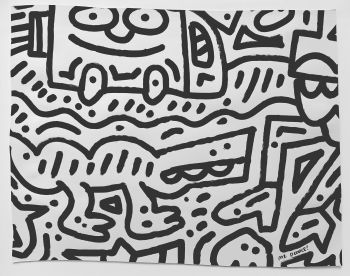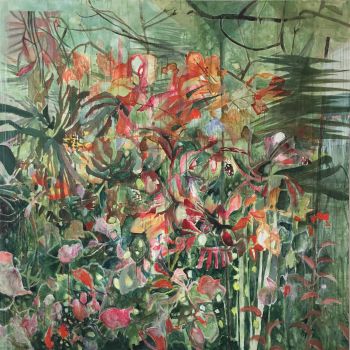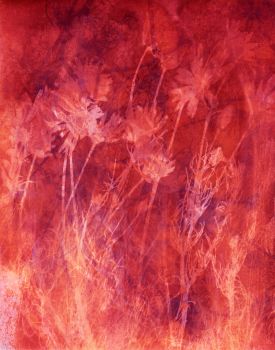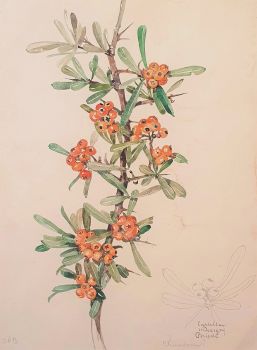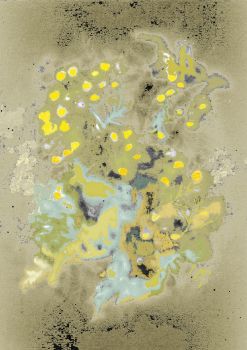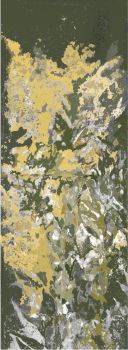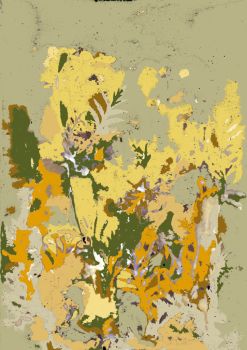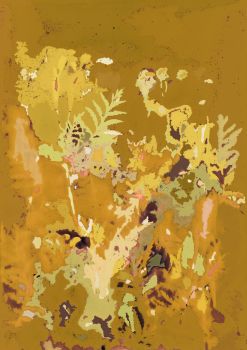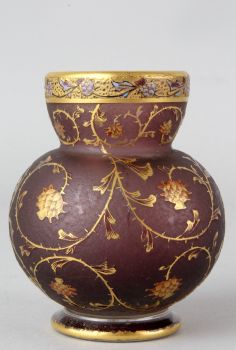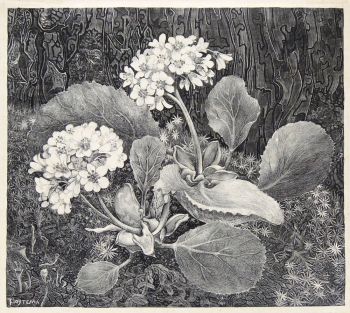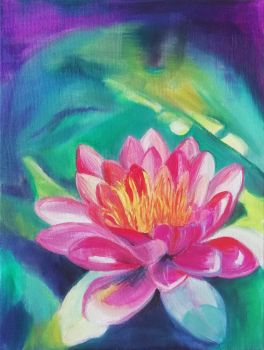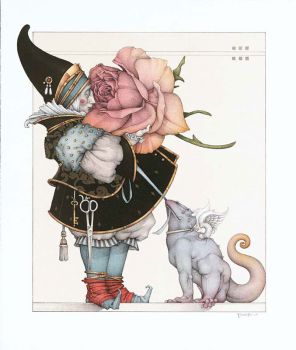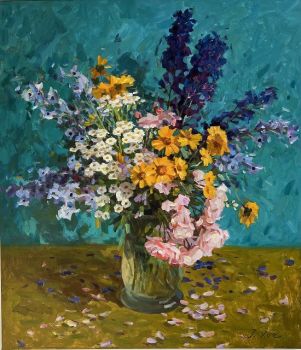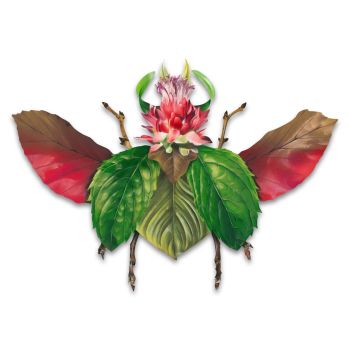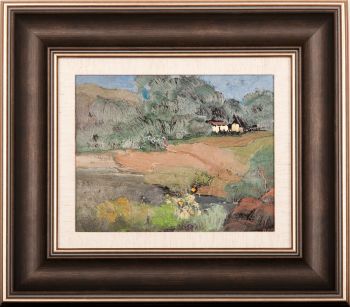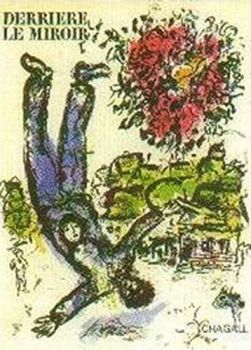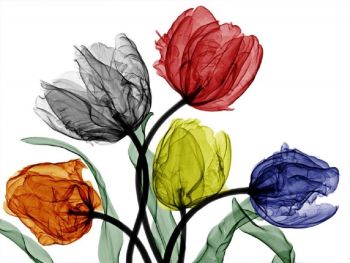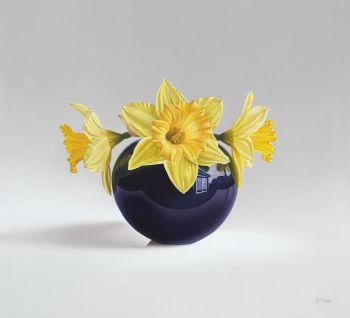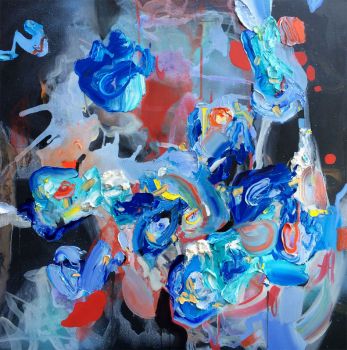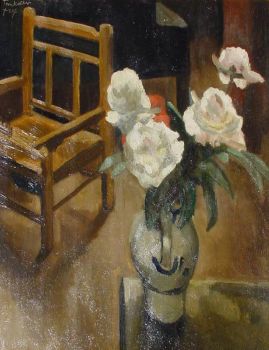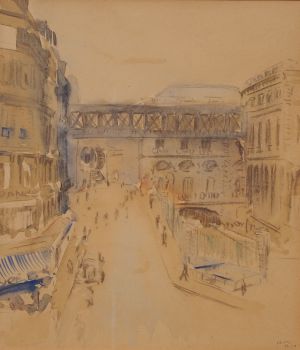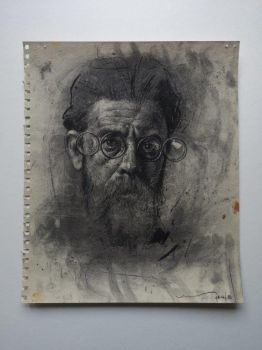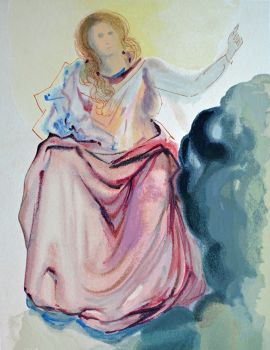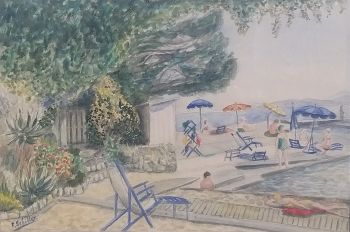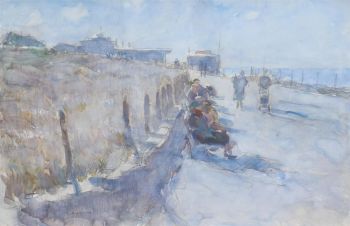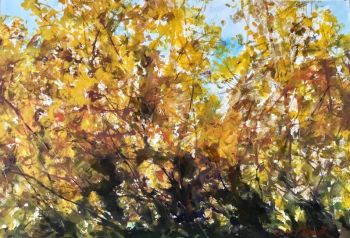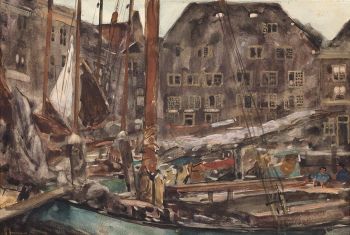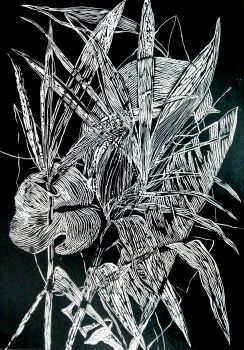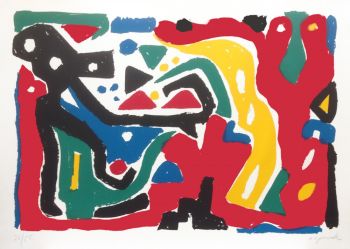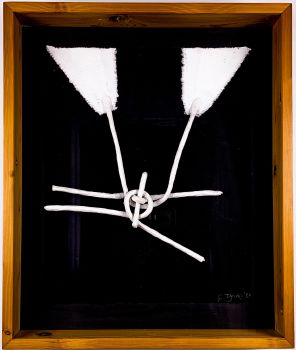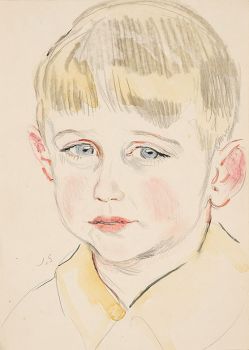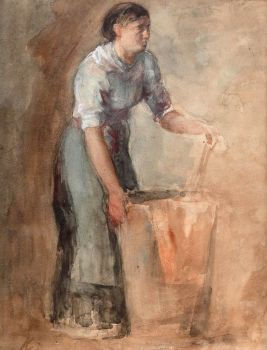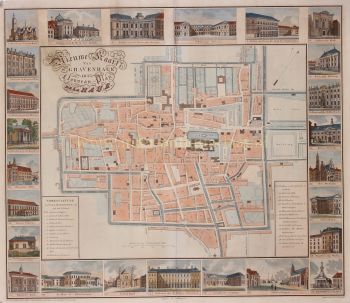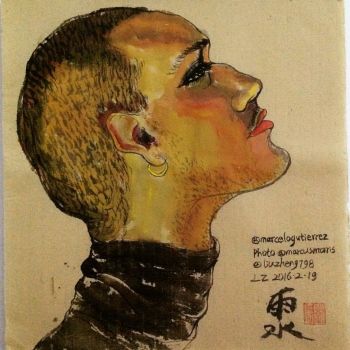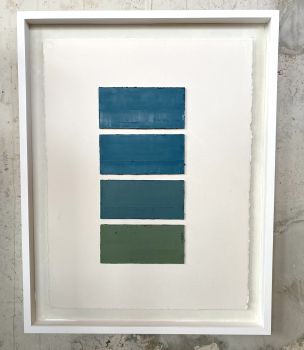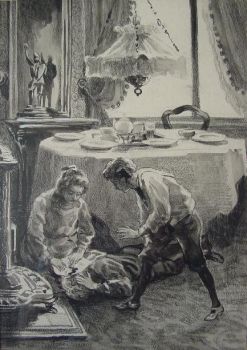Flower watercolour with moths, larvae and pupae, by the daughter of Maria Sibylla Merian 1700
Johanna Helena Herolt
PapelAquarela
29 ⨯ 38 cm
Atualmente indisponível via Gallerease
- Sobre arte[Watercolour of a wallflower and a double hyacinth, with inchworm moths, larvae and pupae].
[Amsterdam, ca. 1700]. Watercolour drawing (38 x 29 cm) on extremely fine white parchment, said to be uterine lamb, showing a wallflower and a double hyacinth with two inchworm moths in the air (2 different species) and two inchworms and two pupae on the leaves and flowers. Framed.
Characteristic original watercolour botanical drawing by Johanna Helena Herolt (1668-post 1721), the eldest daughter of Maria Sibylla Merian and Johann Andreas Graff. It shows a wallflower (Cheiranthus cheiri) and double hyacinth (Hyacinthus orientalis) with two inchworm moths (Geometriae) in the air, two inchworms and two pupae. She probably drew it in Amsterdam around 1700. Though she still remains in the shadow of her mother, she was a fine flower and insect artist in her own right and there is growing appreciation of her work. Her watercolours, more baroque than her mother's and often with brighter colours, radiate vigour and vivacity: the flowers, painted with intensity in every detail, really come to life.
Reitsma, p. 135, notes that the prices for the flower watercolours increased with the number of insects, so the present watercolour must have been unusually expensive. Most of Herolt's work is numbered and the present watercolour is numbered "145"[?] on the back. The published catalogues rarely note the numbers, but we understand the highest number known is 164.
Characteristic watercolour in fine state of preservation, with certificate of authenticity from Dr. S. Segal, Amsterdam. Herolt herself may have revised the upper part of the hyacinth.
Reitsma, Maria Sibylla Merian & dochters, ill. 110 (p. 147; a nearly identical drawing of the same wallflower specimen with 1 butterfly); Wettengl, Maria Sibylla Merian 1647-1717, kunstenares en natuuronderzoekster, no. 120 (ill. 44 on p. 85; a similar watercolour including the same wallflower specimen, with no insects). - Sobre artistaDe acordo com o RKD ela era a filha mais velha dos pintores Maria Sibylla Merian e Johann Andreas Graff, e aprendeu a pintar com eles junto com sua irmã Dorothea Maria Graff. Apesar de ter nascido em Frankfurt, em 1670 a família mudou-se para Nuremberg, onde ela foi criada. Em 1681 sua mãe voltou para Frankfurt sem seu pai, a fim de viver com sua mãe após a morte de seu padrasto Jacob Marrel. Embora Johann Graff tenha se juntado à família mais tarde, em 1686 Merian deixou seu marido e se mudou com suas duas filhas e sua mãe para uma comunidade religiosa de labadistas em Wieuwerd, Friesland. Johann Graff fez várias tentativas de reconciliação, mas acabou retornando à Alemanha. Em 1691, as quatro mulheres mudaram-se para Amsterdã, onde montaram um estúdio de pintura de flores e temas botânicos, continuando o trabalho de Merian em "The Caterpillar Book". Johanna casou-se com o comerciante Jacob Hendrik Herolt, também ex-Labadista, em 28 de junho de 1692. Eles tiveram dois filhos e Johanna começou a assumir suas próprias encomendas, trabalhando para Agnes Block e Amsterdam Hortus como sua mãe. Johanna mudou-se com o marido para o Suriname em 1711, onde provavelmente morreu, algum tempo depois de 1723. Obras [editar] Uma série numerada de 49 desenhos assinados por Herolt em velino estão na coleção do Museu Herzog Anton Ulrich, em Brunswick. [2] Esta série foi possivelmente encomendada pela botânica e colecionadora menonita Agnes Block. Outros desenhos de Herolt estão no Museu Britânico. [2]
Artwork details
Categoria
Assuntos]
Material e Técnica
Cor
Related artworks
- 1 - 4 / 24
- 1 - 4 / 24
Jan Sluijters
Original illustration of Sluijters for the book: 'Laura's opstel'1881 - 1957
Preço em pedidoKunsthandel Pygmalion
1 - 4 / 24

